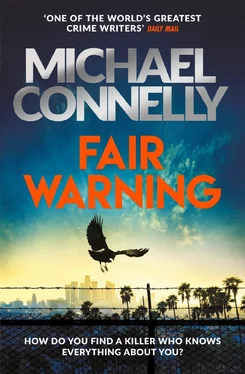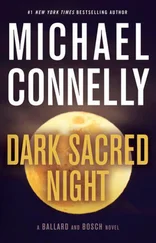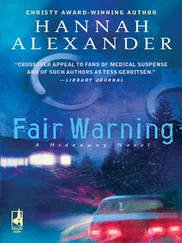“Maybe. I think so.”
I wanted to move in a different direction now.
“So,” I asked. “Did Tina ever talk to you about any of the men she dated?”
“No, she knew my feelings about that and her lifestyle,” Regina said. “Also, what could I say? I met my husband at a blues club in South Side Chicago. I was only twenty years old.”
“Do you know if she did any online dating, that sort of thing?”
“I would guess that she did but I don’t know about it. The police asked me the same thing and I said that Tina didn’t tell me about the specifics of her life here. I knew about the arrests and the rehab — because she needed money. But that was all. The one thing I always told her was that I wished she’d come back home and be close. I told her that every time we talked.”
I nodded. I wrote the lines down.
“And now it’s too late,” she added.
She started to cry again and I wrote that last line down as well.
I should have ended the interview there and not pushed the woman further. But I knew that once she interacted with Mattson again he would tell her to steer clear of me. It was now or never and I had to roll with it.
“Have you been to her apartment?” I asked.
“Not yet,” she said. “The police said it’s still sealed because it was the crime scene.”
I was hoping to get a look inside Tina’s home myself.
“Did they say when you could go in and get her things?”
“Not yet. I’ll have to come back for that. After the funeral, maybe.”
“Where exactly was her place?”
“Do you know where the Tower Records used to be?”
“Yes, across from the bookstore.”
“She lived right above it. Sunset Place Apartments.”
Regina pulled fresh tissues out of the box and dabbed at her eyes.
“Cute place,” she said.
I nodded.
“She was beautiful and kind,” Regina said. “Why did someone have to kill her?”
She buried her face and her sobs in the tissues. I just watched her. She had asked a question only a mother could ask and only the killer could answer. But it was a good line and I memorized it to write down later. For the moment I just nodded sympathetically.
I got back to the office by lunchtime and everyone was in their cubicles eating sandwiches from Art’s Deli. Most days we ordered in food but no one had thought to text me for my order. That was okay because at the moment I didn’t need food. I was fueled by the momentum of the story. I was in that early stage where I knew I had something but wasn’t sure what it was or what the next step should be. I started by opening up a Word file on my laptop and typing up my handwritten notes from the interview with Regina Portrero. I was halfway through the process when I realized my problem. The next step was to go back to Lisa Hill to ask more questions about Tina and her stalker, but Lisa Hill thought I was not only a scumbag but a suspect in her friend’s murder.
I put transcribing my notes aside and checked my phone to see if Hill had gotten around to blocking me on Instagram. She had not, but my guess was that this was just an oversight and she would do so as soon as she checked her followers and was reminded of my previous deception.
I spent the next half hour composing a private message to her that I hoped would give me a second chance.
Lisa, I apologize. I should’ve been up-front with you. But the cops are wrong about me and they know it. They just don’t want you talking to a reporter. It would be embarrassing if I got to the real suspect ahead of them. I liked Tina a lot. I wished she had wanted to meet again. But that’s it, nothing else. I am going to find out who stalked her and may have hurt her. I need your help. Please call me again so I can explain further and tell you what I know that the cops don’t. Thank you.
I put my phone number on the end of the message and sent it, hoping for the best but knowing it was a long shot, and that I couldn’t just wait for Lisa Hill to change her mind about me. I next checked the causes-of-death website where I had posted my request for information on atlanto-occipital dislocation. And this was where my luck and the story changed dramatically. There were already five messages waiting for me.
The first message had been posted at 7 a.m. L.A. time but 10 a.m. Florida time, where the posting had come from the Broward County Medical Examiner’s Office. A pathologist named Frank Garcia cited an AOD case from the previous year that had been ruled a homicide.
Have an open homicide. Female, 32, came in last year as single-car traffic fatal with COD orthopedic decapitation (AOD) but TA investigator said impact not enough. Scene was staged. TA injuries postmortem. Victim name: Mallory Yates. I/O Ray Gonzalez FLPD.
I could decipher most of the shorthand. COD was cause of death and TA meant traffic accident, while I/O meant investigating officer. And I thought FLPD meant Florida Police Department until I googled it and came up with Fort Lauderdale Police Department, which was located within Broward County. I copied the message and transferred it to the story file I had created on my computer.
The next message was from Dallas and it was similar to the first in that the victim was a woman of similar age — thirty-four-year-old Jamie Flynn — who had died in what appeared to be a single-car accident with AOD listed as cause of death. This was not classified as a homicide but as a suspicious death because all of Flynn’s toxicity reports came back clean, so there was no clear explanation as to why she drove off a road and down an embankment into a tree. Flynn’s death had occurred ten months earlier and the case was still open because of the suspicious circumstances.
The third message was a follow-up from Frank Garcia at the Broward County Medical Examiner’s Office.
Checked with Gonzalez at FLPD. Case still open, no suspects, no leads at this time.
The fourth post on the message board was about another case, which had occurred three months before. This one came from Brian Schmidt, who was an investigator with the Santa Barbara County Coroner’s Office.
Charlotte Taggart, 22 yoa, fell from cliff at Hendry’s Beach, found DOA next morning. AOD and other injuries, accidental. BAT .09 and fall occurred 03:00 in full darkness.
I knew that BAT meant blood-alcohol toxicity and that the limit for driving in California was .08, indicating Taggart was at least slightly inebriated when she walked to the edge of a cliff in darkness and fell to her death.
The fifth message was posted most recently. It was the shortest message but it froze me.
Who is this?
It had been posted only twenty minutes earlier by Dr. Adhira Larkspar, who I knew was the chief medical examiner of Los Angeles County. It meant I was in danger of discovery. When no one volunteered to identify themselves to their boss, Larkspar might check to see if her office did indeed have a recent AOD case, and this inquiry would undoubtedly lead her to Mattson and Sakai, who would undoubtedly conclude that I had been the one to initially post on the message board.
I tried to push thoughts of another visit from the detectives aside and to focus on the information I had in front of me. Three cases of AOD in the last year and a half, with Tina Portrero making a fourth. The victims were women ranging in age from twenty-two to forty-four. So far, two of the cases had been ruled homicides, one was suspicious, and one — the most recent before Portrero — was classified as an accident.
I did not know enough about human physiology to be sure whether the fact that all four cases involved females was significant. Since men are generally larger and more muscled than women, it was possible that AOD happened more to women because their bodies were more fragile.
Читать дальше





![Майкл Коннелли - Christmas Even [Short story]](/books/390532/majkl-konnelli-christmas-even-short-story-thumb.webp)
![Майкл Коннелли - The Night Fire [Harry Bosch - 22]](/books/405630/majkl-konnelli-the-night-fire-harry-bosch-22-thumb.webp)



